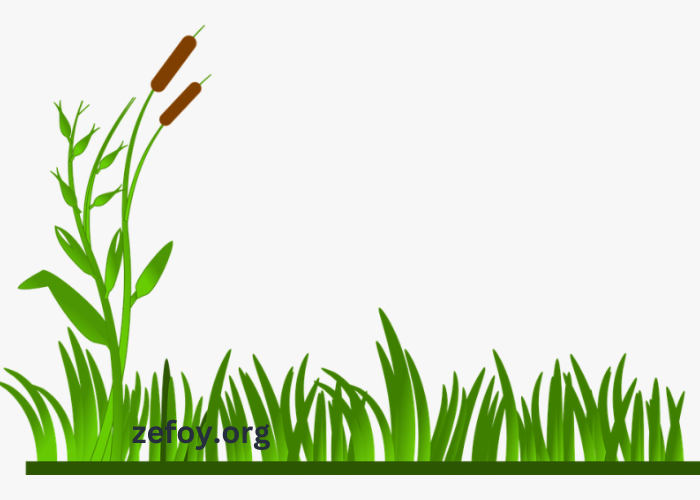Grass is more than just a common element in our landscapes; it plays a crucial role in ecosystems, agriculture, and even human culture. Covering vast areas of land, from lawns to meadows and prairies, grass contributes to soil health, provides habitat for wildlife, and offers recreational spaces for people. In the digital realm, grass is frequently represented in various artistic forms, including clipart, such as clipart:254b5v0-Neu= Grass, which can be used to enhance presentations, educational materials, and creative projects. This article will explore the significance of grass, its ecological benefits, varieties, care tips, and the cultural representations that illustrate its importance.
Why is Grass Important for the Environment?
Grass plays a vital role in maintaining ecological balance. It acts as a natural filter, improving air and water quality by trapping dust and pollutants. Grass roots help prevent soil erosion by stabilizing the ground, making it crucial for maintaining landscapes, especially in hilly or sloped areas. Furthermore, grasslands serve as habitats for numerous species, promoting biodiversity. They also contribute to carbon sequestration, helping to mitigate climate change by absorbing carbon dioxide from the atmosphere. Understanding the environmental benefits of grass highlights its indispensable role in our ecosystem.
What Are the Different Types of Grass?
Grass is a diverse family of plants with thousands of species, each adapted to different environments and uses. Some of the most common types include Kentucky bluegrass, Bermuda grass, and fescue. Kentucky bluegrass is favored for lawns in temperate regions due to its lush appearance and tolerance of cold. Bermuda grass, on the other hand, thrives in warm climates and is often used for athletic fields and golf courses because of its durability. Fescue grasses are versatile and commonly used in shady areas. Recognizing the differences between these varieties can help individuals choose the right type for their specific needs. Visual aids like clipart:254b5v0-Neu= Grass can help illustrate these distinctions effectively.
How Does Grass Contribute to Soil Health?
Grass is essential for promoting soil health through its root systems. Grass roots penetrate deep into the soil, enhancing its structure and aeration. This allows water to infiltrate more easily and helps reduce runoff, which is crucial for preventing erosion. The decaying leaves and roots of grass add organic matter to the soil, improving its nutrient content and fostering a rich ecosystem of microorganisms. Healthy soil is fundamental for successful gardening and farming, as it supports plant growth and resilience against pests and diseases. Understanding the role of grass in soil health is vital for anyone involved in agriculture or gardening.
What Are the Benefits of Grass for Wildlife?
Grasslands provide critical habitats for a variety of wildlife, including insects, birds, and small mammals. Many species rely on grass for food, shelter, and breeding grounds. For example, grasshoppers and other insects thrive in grasslands, serving as food sources for birds and small mammals. Additionally, certain birds, like meadowlarks, prefer nesting in tall grass, which offers protection from predators. The interconnectedness of grasslands and wildlife underscores the importance of conserving these habitats. Representations of grassland ecosystems in visuals such as clipart:254b5v0-Neu= Grass can effectively communicate the significance of these environments.
How Can You Properly Care for Grass?
Caring for grass requires understanding its specific needs and environmental conditions. Regular mowing helps maintain a healthy lawn, preventing weeds from taking over and promoting denser growth. Proper watering is essential, especially during dry spells; grass typically requires about an inch of water per week. Aerating the lawn can improve air circulation and nutrient absorption, leading to healthier grass. Fertilization should be done judiciously, providing necessary nutrients without causing harm to the environment. Knowledge of these care techniques is crucial for achieving a lush and thriving lawn, and guides or illustrations, including clipart:254b5v0-Neu= Grass, can provide helpful tips.
What Is the Role of Grass in Agriculture?
Grass is not only important for landscaping; it also plays a significant role in agriculture. Pastures and hayfields provide essential forage for livestock, supporting the meat and dairy industries. Grasses are a primary food source for grazing animals like cattle and sheep, promoting their health and productivity. Additionally, grass is used in crop rotation systems to improve soil fertility and reduce pests. By integrating grass into agricultural practices, farmers can create sustainable systems that enhance productivity while preserving environmental health. Visual representations, such as clipart:254b5v0-Neu= Grass, can help illustrate these agricultural practices.
How Does Grass Affect Urban Spaces?
In urban environments, grass contributes to aesthetics and enhances quality of life. Parks and green spaces adorned with grass provide recreational areas for residents, promoting physical activity and social interaction. Grass also plays a role in urban ecology by cooling temperatures, reducing heat islands, and improving air quality. Landscaping with grass can effectively manage stormwater runoff, mitigating flooding and erosion in urban areas. The integration of grass into city planning is vital for creating livable, sustainable environments, and representations like clipart:254b5v0-Neu= Grass can help visualize these concepts.
What Are Common Uses of Grass in Landscaping?
Grass is a versatile element in landscaping, serving both functional and aesthetic purposes. It can be used to create lush lawns, gardens, and recreational spaces. Different grass types are chosen based on climate, foot traffic, and the desired appearance of the landscape. In addition to traditional lawns, grass can be incorporated into ornamental designs, such as ornamental grasses that add texture and movement to gardens. Understanding how to use grass effectively in landscaping can enhance outdoor spaces and create inviting environments. Resources that feature clipart:254b5v0-Neu= Grass can inspire creative landscaping ideas.
Conclusion
Grass is an integral part of our environment, culture, and daily lives, offering countless benefits that extend beyond mere aesthetics. From its ecological importance to its role in agriculture and urban planning, grass is essential for maintaining the balance of our ecosystems. Understanding the various types of grass, its care requirements, and its significance in wildlife habitats can deepen our appreciation for this often-overlooked plant. The representation of grass in visual formats, such as clipart:254b5v0-Neu= Grass, can enhance our ability to communicate its importance effectively. As we continue to explore the multifaceted nature of grass, let us embrace its beauty and the vital role it plays in sustaining life on Earth.




